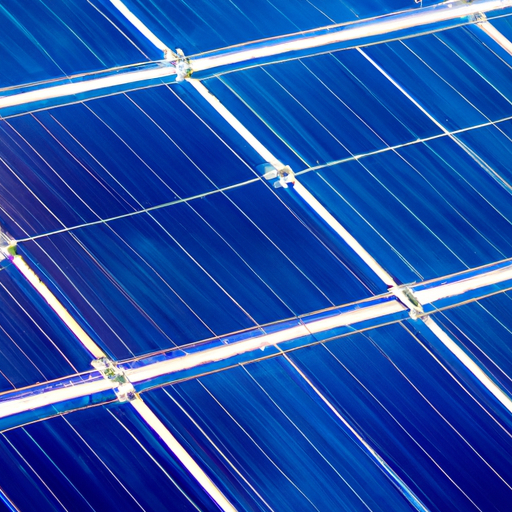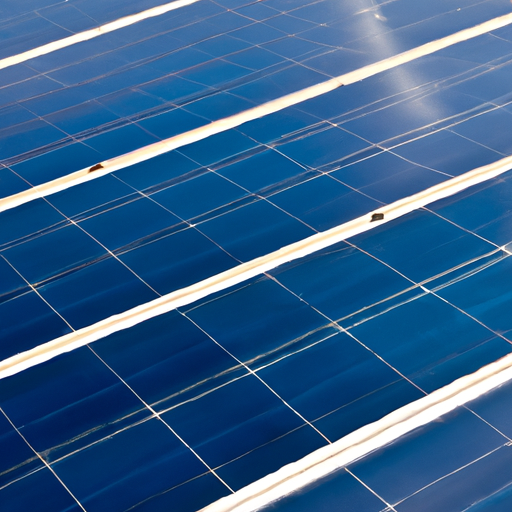Ever wondered what sets monocrystalline and polycrystalline solar panels apart? At HomeSolarDIY, we delve into the nitty-gritty details to answer your burning questions. Our comprehensive article explores the differences between these two popular types of solar panels, shedding light on their efficiency, cost-effectiveness, and suitability for various applications. Whether you’re considering a DIY solar project or simply seeking to expand your knowledge, we’ve got you covered!
Curious to learn more? Visit our website to read the full article and gain a deeper understanding of monocrystalline and polycrystalline solar panels. Discover the advantages and disadvantages of each type, and find out which one may be the best fit for your specific needs. With HomeSolarDIY as your go-to resource, you’ll have all the information you need to make informed decisions about your solar journey. Let’s unlock the power of the sun together!

Monocrystalline Solar Panels
Definition and Composition
Monocrystalline solar panels, also known as single-crystalline panels, are made from a single continuous crystal structure. The silicon used in these panels is carefully grown in a controlled environment to form a uniform structure with no boundaries or defects. This results in a highly efficient solar cell.
Advantages
One of the major advantages of monocrystalline solar panels is their high efficiency. Due to the uniform crystal structure, they can convert a larger percentage of sunlight into electricity compared to other types of solar panels. This means that you can generate more power with a smaller area of monocrystalline panels.
Another advantage is their space efficiency. Monocrystalline panels have a higher power density, meaning they can produce more electricity per square meter than polycrystalline panels. This makes them a great choice for situations where space is limited.
Disadvantages
The main disadvantage of monocrystalline panels is their higher cost. They are more expensive to manufacture compared to polycrystalline panels due to the more complex and time-consuming production process. However, it’s important to note that the higher efficiency of monocrystalline panels can offset this initial cost over the long run by providing higher energy output.
Polycrystalline Solar Panels
Definition and Composition
Polycrystalline solar panels, also known as multi-crystalline panels, are made from multiple silicon crystals that are fused together. These panels are created by pouring molten silicon into a mold and allowing it to cool and solidify, resulting in a less uniform crystal structure.
Advantages
One of the main advantages of polycrystalline panels is their lower cost compared to monocrystalline panels. The manufacturing process for polycrystalline panels is simpler and less time-consuming, which translates to a lower price for consumers. If you have a limited budget, polycrystalline panels may be a more affordable option.
Another advantage is their lower temperature coefficient. This means that polycrystalline panels are less affected by high temperatures and can maintain their efficiency better under hot conditions.
Disadvantages
The lower efficiency is the main disadvantage of polycrystalline panels. The multiple crystal structures in these panels create boundaries and defects that can reduce their efficiency compared to monocrystalline panels. If you have a large space available for solar installation, monocrystalline panels may be a better choice to maximize your power output.
Efficiency
Comparison of Efficiency
When comparing the efficiency of monocrystalline and polycrystalline panels, monocrystalline panels usually have a higher efficiency rating. Monocrystalline panels typically have efficiency ratings ranging from 15% to 20%, while polycrystalline panels usually have efficiency ratings ranging from 13% to 16%.
Factors Affecting Efficiency
Several factors can affect the efficiency of solar panels, regardless of their type. One of the main factors is the temperature. Solar panels perform best when operating at lower temperatures, so it’s important to consider the temperature coefficient when selecting panels. The type of silicon used and the quality of the manufacturing process also play a role in panel efficiency.

Cost
Comparison of Cost
In general, monocrystalline panels are more expensive than polycrystalline panels. The more complex manufacturing process and higher efficiency of monocrystalline panels contribute to their higher cost. However, it’s important to consider the long-term savings in energy bills that can result from using more efficient panels.
Factors Affecting Cost
The cost of solar panels can vary depending on factors such as the brand, size, and installation requirements. It’s important to consider the overall value and quality of the panels when assessing their cost. Cheaper panels may have lower efficiency or may not come with warranties and support.
Appearance
Comparison of Appearance
When it comes to appearance, there is a noticeable difference between monocrystalline and polycrystalline panels. Monocrystalline panels have a uniform, sleek black appearance due to their single crystal structure. On the other hand, polycrystalline panels have a blue hue and a grainy, mosaic-like appearance due to their multiple crystal structures.
Aesthetic Considerations
The choice between monocrystalline and polycrystalline panels may also depend on your aesthetics preferences. If you prioritize a sleek and uniform look, monocrystalline panels may be more appealing. However, if appearance is not a significant factor for you, the performance and cost considerations should take precedence.
Durability
Comparison of Durability
Both monocrystalline and polycrystalline panels are designed to be durable and withstand various weather conditions. They are made with tempered glass fronts that protect the solar cells from damage. Both types of panels can last for decades with proper maintenance and care.
Longevity and Maintenance
The longevity of solar panels depends on various factors such as the quality of the materials used and the manufacturing process. High-quality monocrystalline and polycrystalline panels can last for more than 25 years. Regular cleaning and maintenance, such as removing debris and inspecting for any signs of damage, can help ensure optimal performance and longevity.
Performance in Different Conditions
Effect of Temperature
Both monocrystalline and polycrystalline panels can generate electricity in different temperature conditions. However, high temperatures can reduce the efficiency of solar panels. Monocrystalline panels generally have a lower temperature coefficient, which means they are more efficient in hot conditions compared to polycrystalline panels.
Effect of Light Intensity
Solar panels can generate electricity even in low light conditions. However, the power output of the panels is directly proportional to the intensity of sunlight. In situations with lower light intensity, such as cloudy or shaded areas, monocrystalline panels tend to perform better due to their higher efficiency.
Environmental Impact
Comparison of Environmental Impact
Both monocrystalline and polycrystalline panels have a low environmental impact during their operational lifetime. They generate clean energy without producing greenhouse gas emissions. However, the manufacturing process of solar panels can have some environmental impact, particularly in terms of energy consumption and waste generation.
Recyclability and Waste Management
Solar panels can be recycled at the end of their useful life. The materials used in solar panels, including silicon cells, aluminum frames, and glass, can be recycled and reused. Proper waste management and recycling practices are essential to minimize any potential environmental impact.
Choosing the Right Solar Panels
Factors to Consider
When choosing between monocrystalline and polycrystalline panels, several factors need to be considered. These include your available budget, space for installation, efficiency requirements, aesthetic preferences, and the specific environmental conditions in your area. It’s important to conduct thorough research and consult with solar professionals to determine the best option for your needs.
Personal Preferences
Ultimately, the choice between monocrystalline and polycrystalline panels may come down to personal preferences. Some individuals may prioritize higher efficiency and are willing to invest in monocrystalline panels, while others may prioritize cost-effectiveness and choose polycrystalline panels. It’s crucial to evaluate your individual requirements and make an informed decision.
Conclusion
In conclusion, monocrystalline and polycrystalline solar panels have distinct differences in terms of efficiency, cost, appearance, durability, performance, and environmental impact. Monocrystalline panels offer higher efficiency and space efficiency but come at a higher cost. Polycrystalline panels are more affordable and have a lower temperature coefficient but are less efficient. Understanding these differences and considering your specific needs and preferences will help you make the right choice when it comes to selecting solar panels for your energy needs. With the right panels in place, you can harness the power of the sun and contribute to a greener future.

